Isaac Newton Kanaeva Tatyana 9 «А» school №
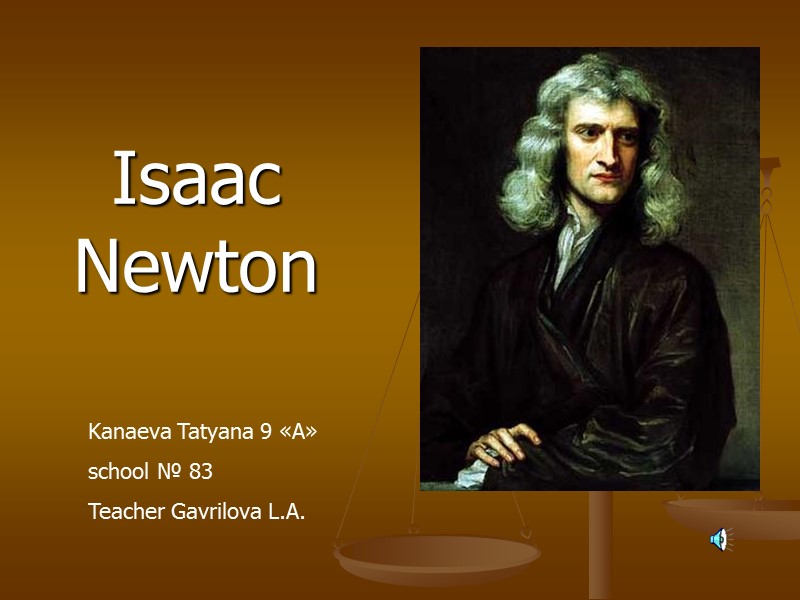
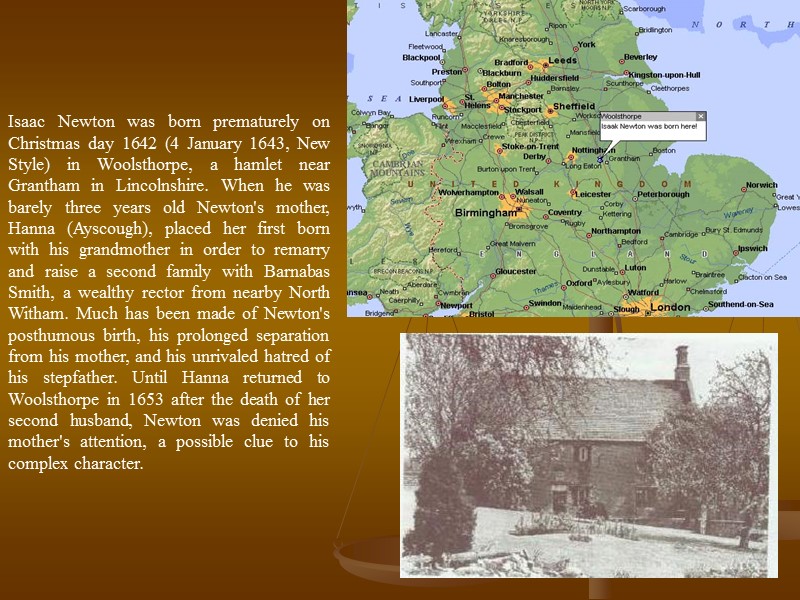
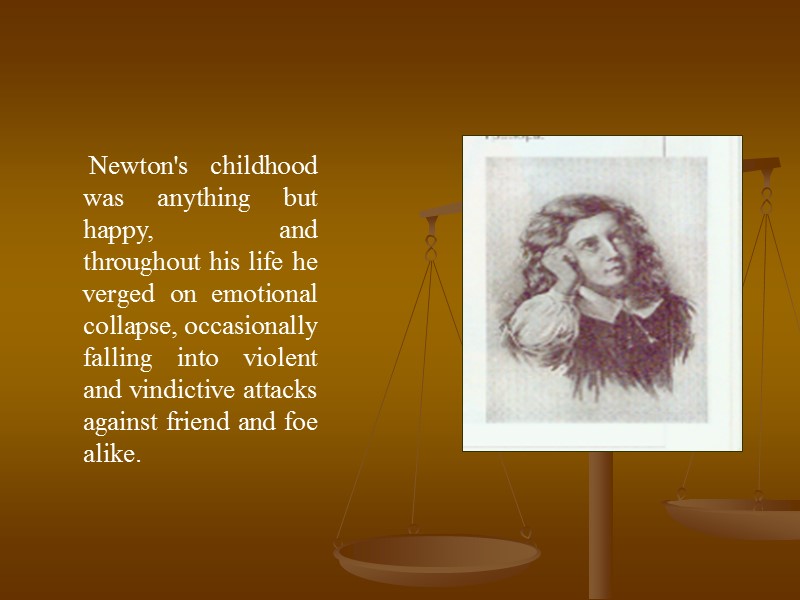
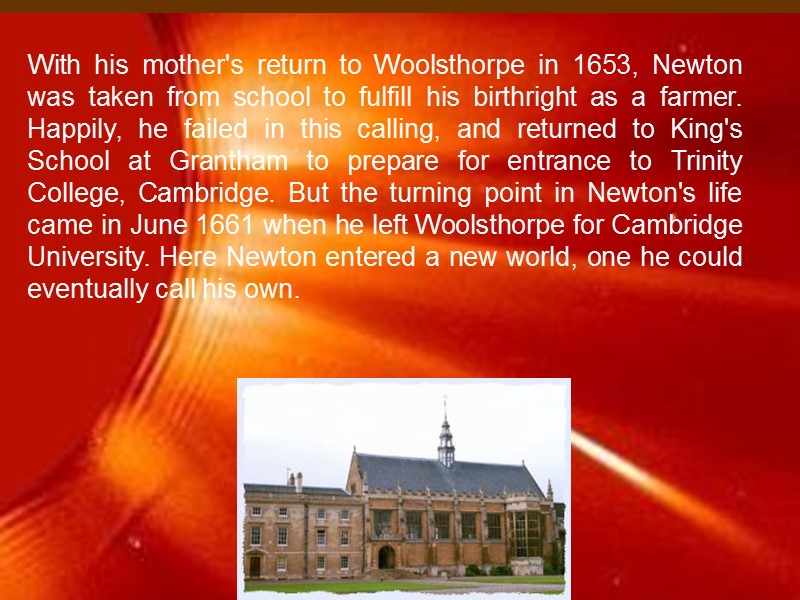
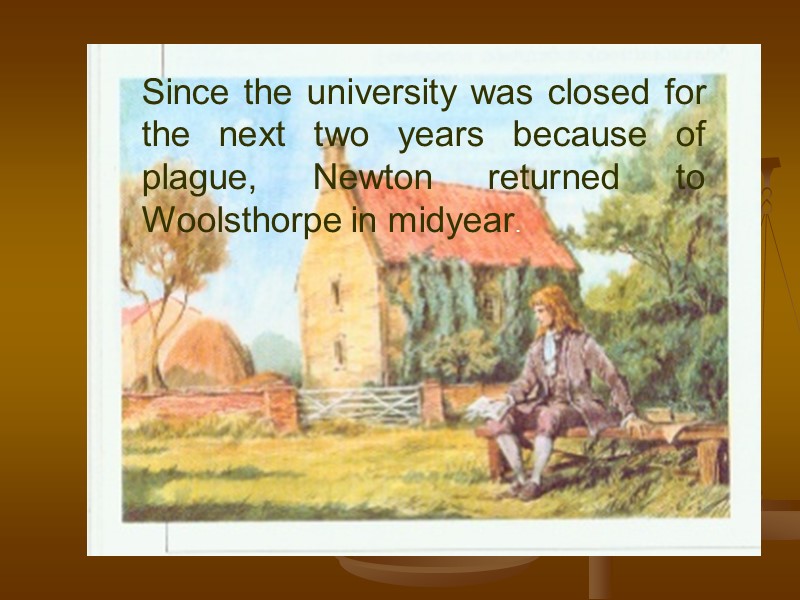
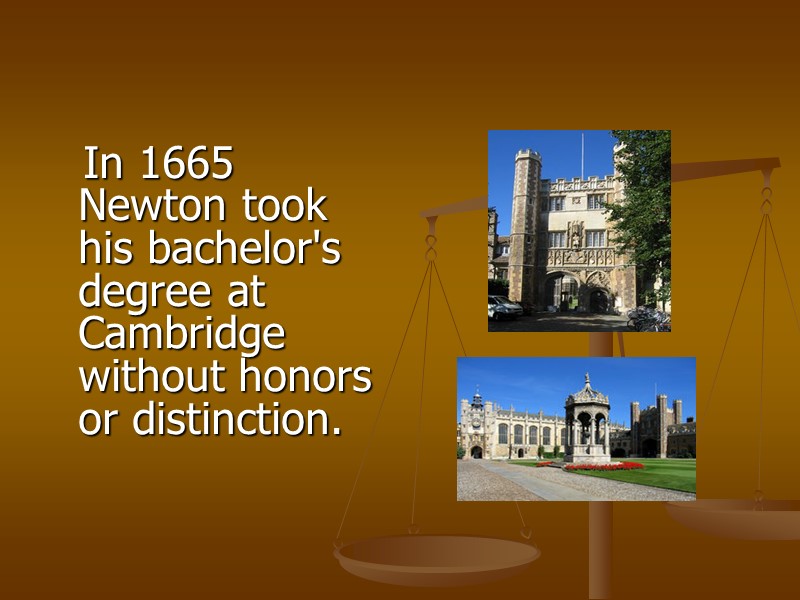
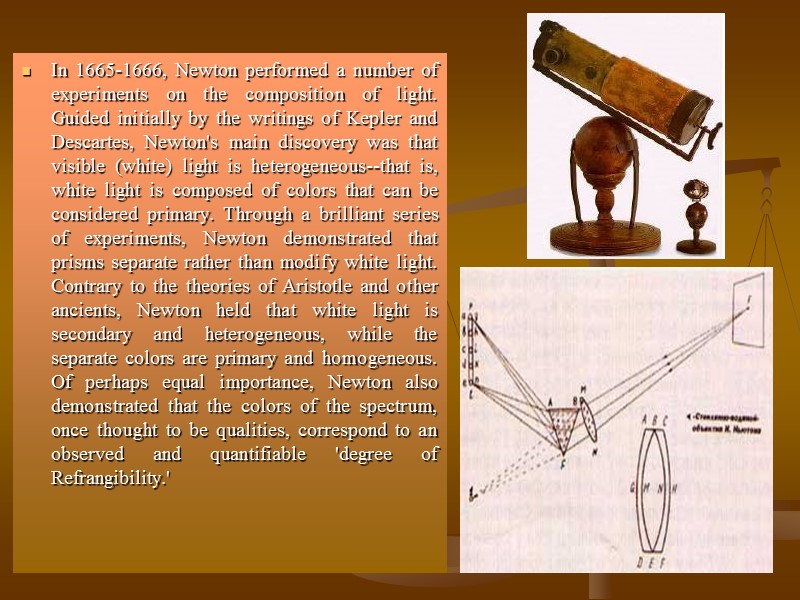
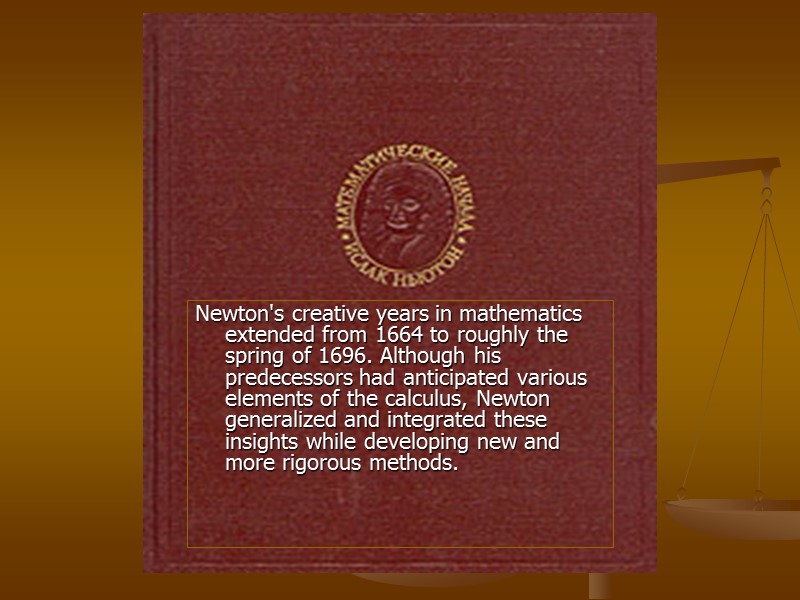
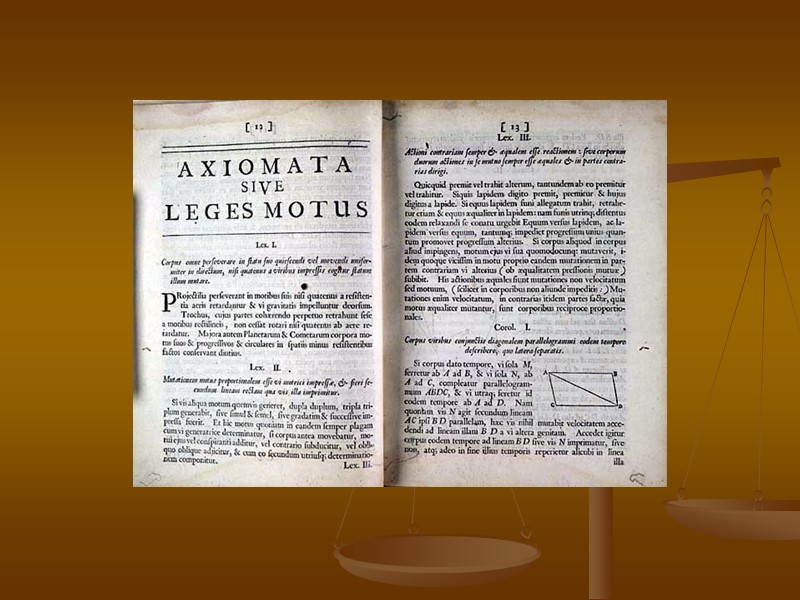
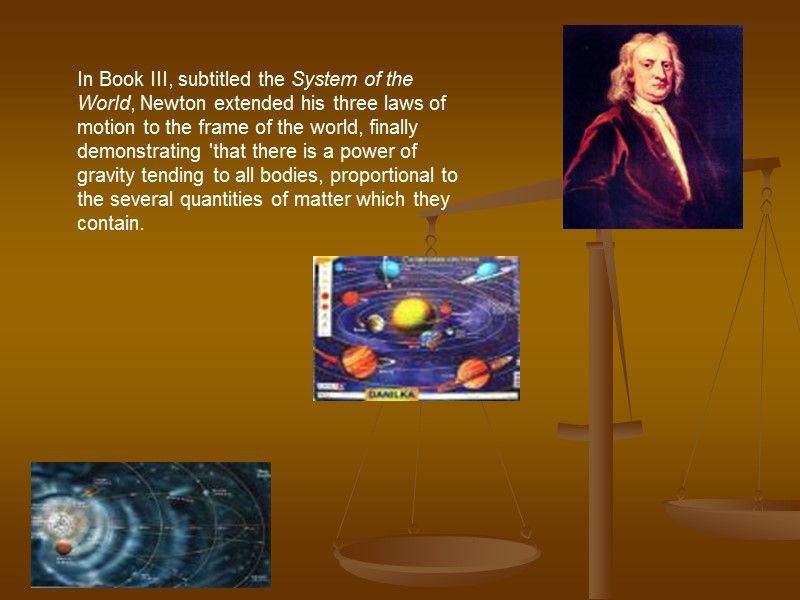
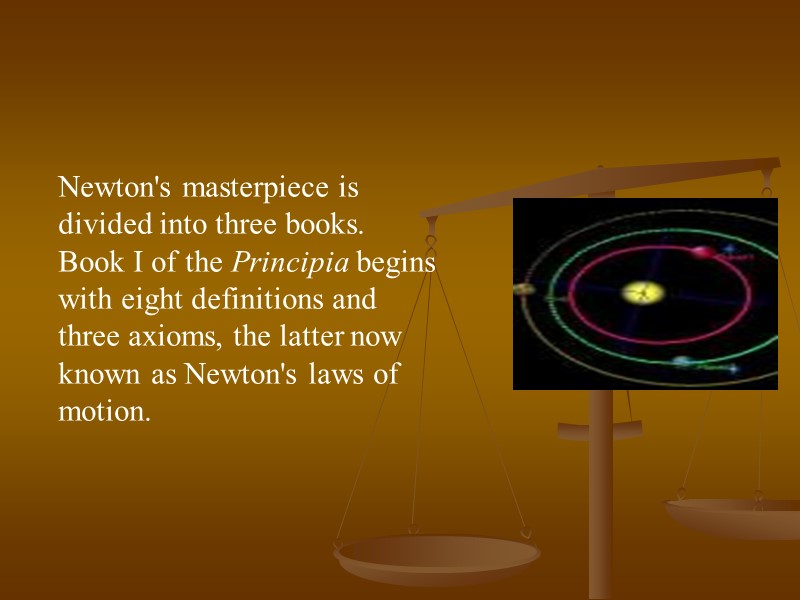
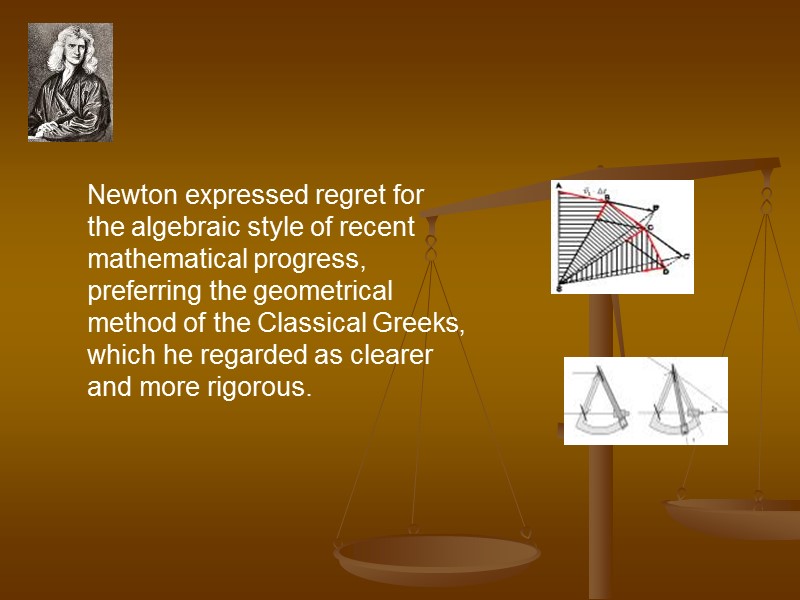
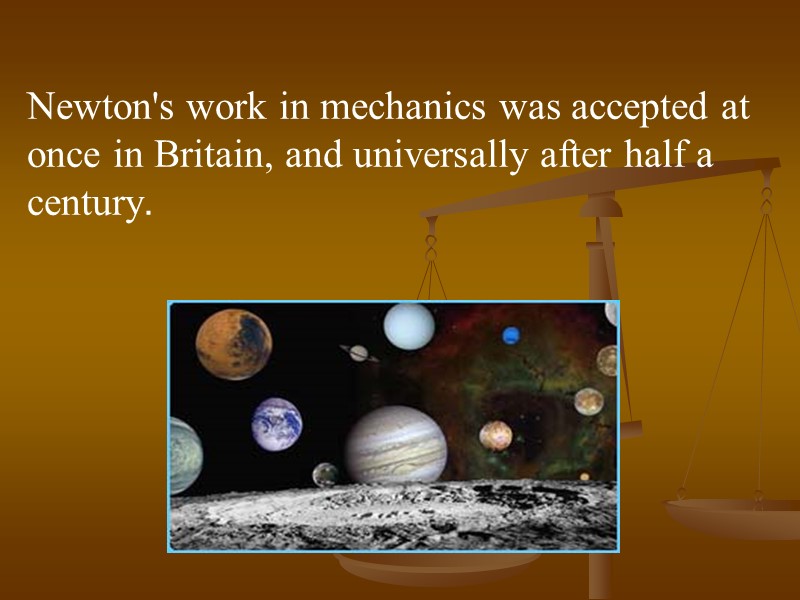
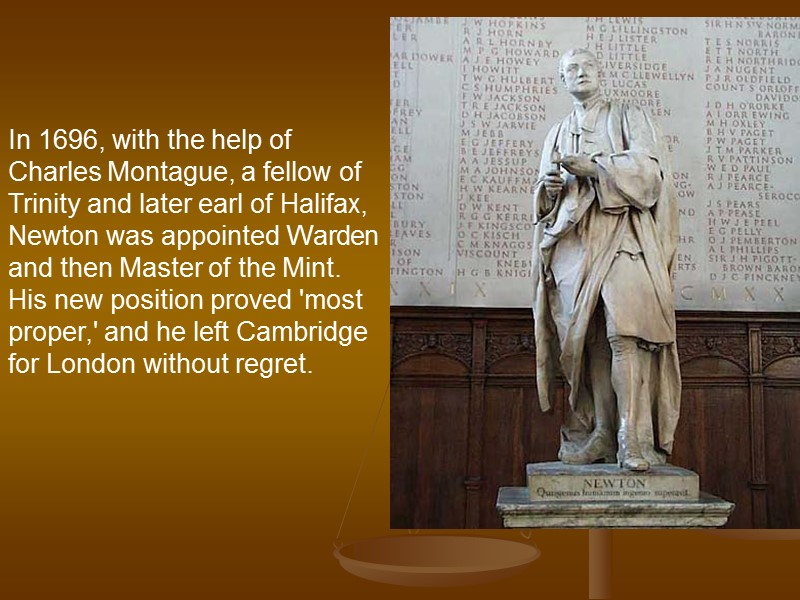
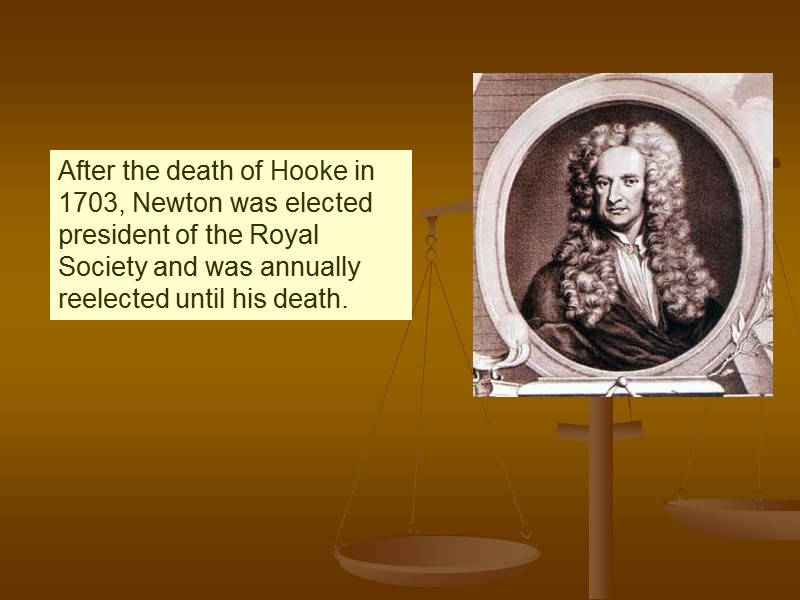
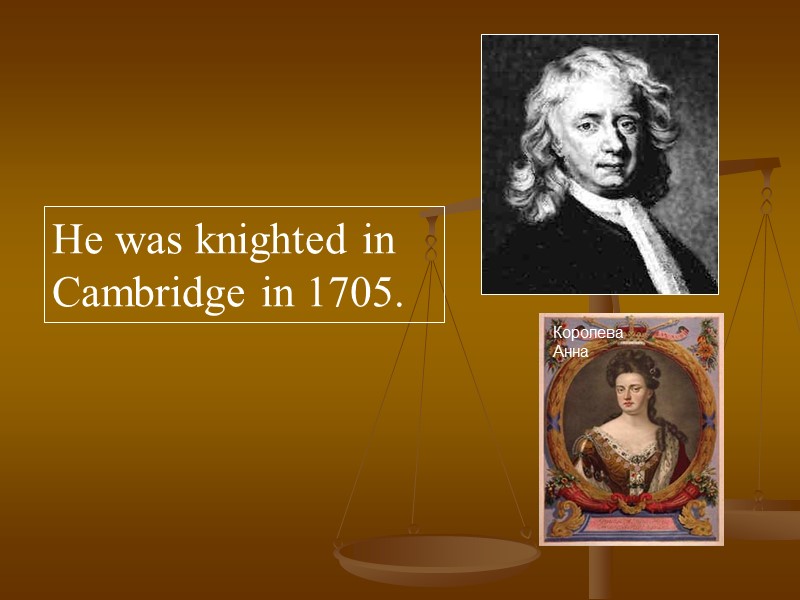
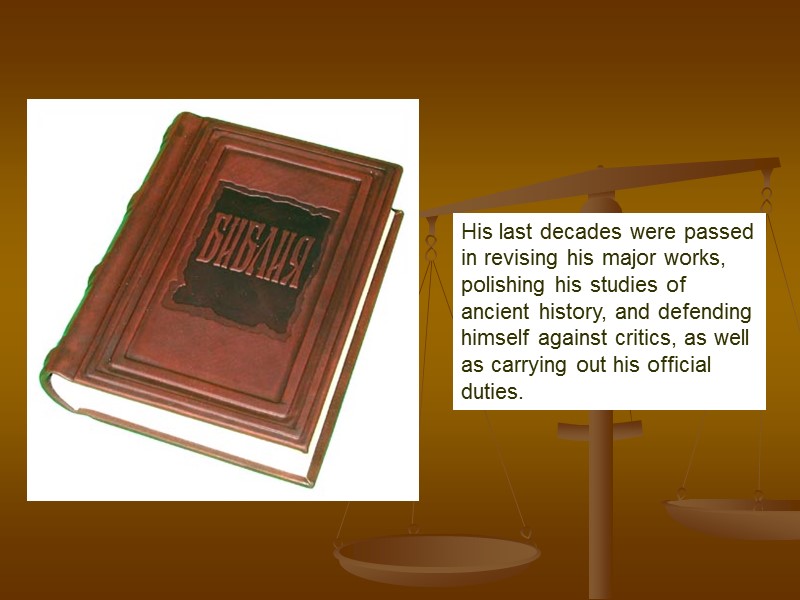
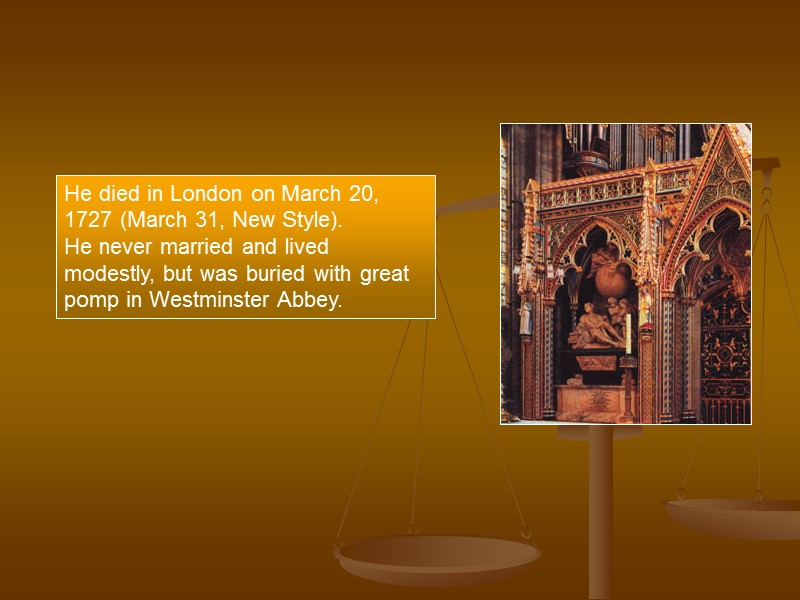
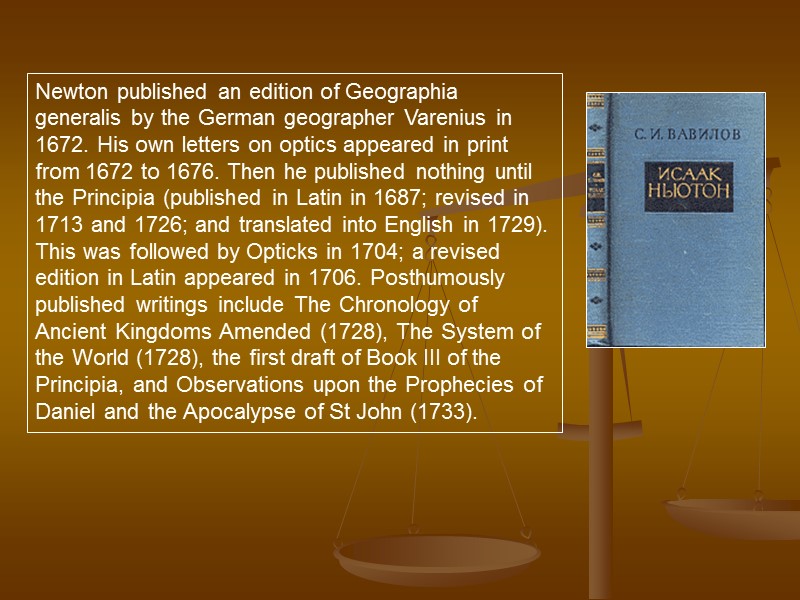
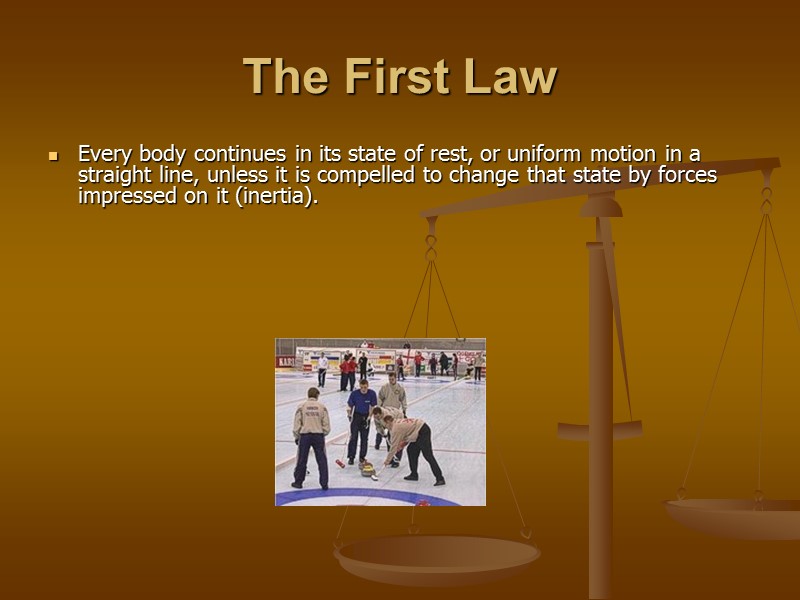
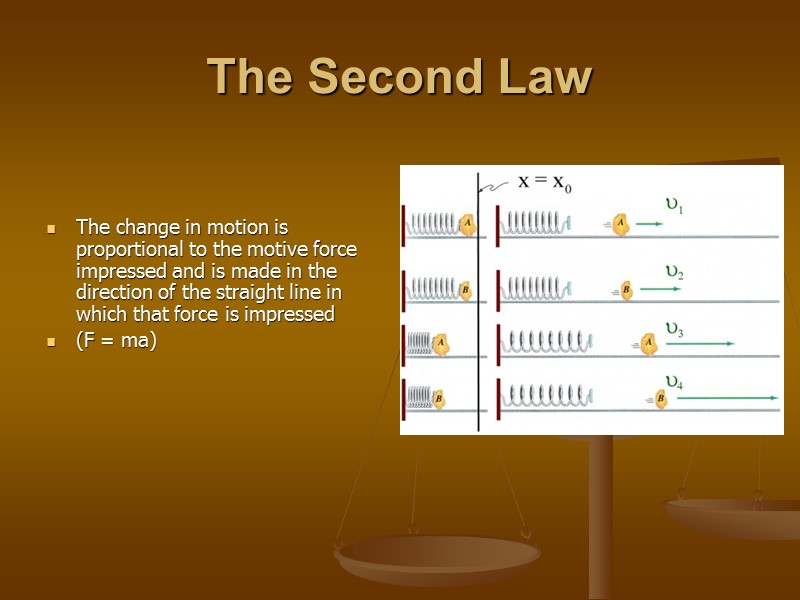
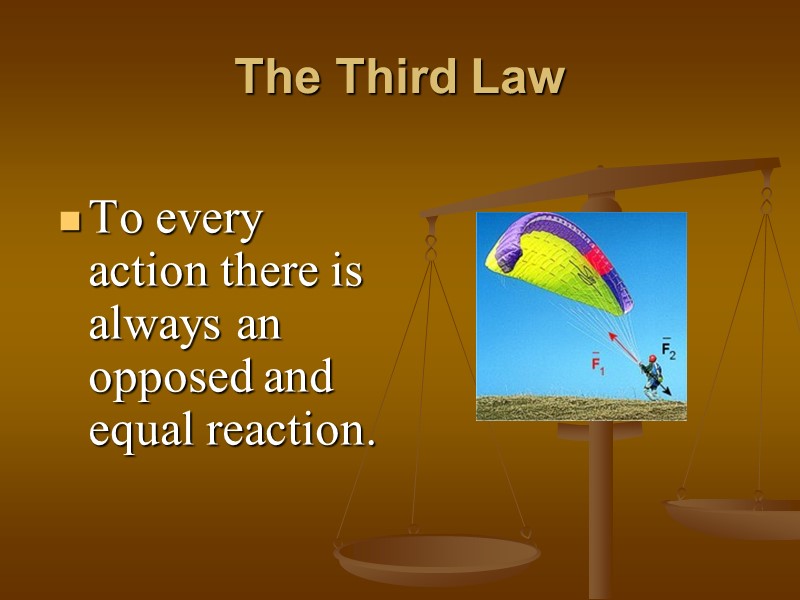
26112-isaac_newton.ppt
- Количество слайдов: 22
 Isaac Newton Kanaeva Tatyana 9 «А» school № 83 Teacher Gavrilova L.A.
Isaac Newton Kanaeva Tatyana 9 «А» school № 83 Teacher Gavrilova L.A.
 Isaac Newton was born prematurely on Christmas day 1642 (4 January 1643, New Style) in Woolsthorpe, a hamlet near Grantham in Lincolnshire. When he was barely three years old Newton's mother, Hanna (Ayscough), placed her first born with his grandmother in order to remarry and raise a second family with Barnabas Smith, a wealthy rector from nearby North Witham. Much has been made of Newton's posthumous birth, his prolonged separation from his mother, and his unrivaled hatred of his stepfather. Until Hanna returned to Woolsthorpe in 1653 after the death of her second husband, Newton was denied his mother's attention, a possible clue to his complex character.
Isaac Newton was born prematurely on Christmas day 1642 (4 January 1643, New Style) in Woolsthorpe, a hamlet near Grantham in Lincolnshire. When he was barely three years old Newton's mother, Hanna (Ayscough), placed her first born with his grandmother in order to remarry and raise a second family with Barnabas Smith, a wealthy rector from nearby North Witham. Much has been made of Newton's posthumous birth, his prolonged separation from his mother, and his unrivaled hatred of his stepfather. Until Hanna returned to Woolsthorpe in 1653 after the death of her second husband, Newton was denied his mother's attention, a possible clue to his complex character.
 Newton's childhood was anything but happy, and throughout his life he verged on emotional collapse, occasionally falling into violent and vindictive attacks against friend and foe alike.
Newton's childhood was anything but happy, and throughout his life he verged on emotional collapse, occasionally falling into violent and vindictive attacks against friend and foe alike.
 With his mother's return to Woolsthorpe in 1653, Newton was taken from school to fulfill his birthright as a farmer. Happily, he failed in this calling, and returned to King's School at Grantham to prepare for entrance to Trinity College, Cambridge. But the turning point in Newton's life came in June 1661 when he left Woolsthorpe for Cambridge University. Here Newton entered a new world, one he could eventually call his own.
With his mother's return to Woolsthorpe in 1653, Newton was taken from school to fulfill his birthright as a farmer. Happily, he failed in this calling, and returned to King's School at Grantham to prepare for entrance to Trinity College, Cambridge. But the turning point in Newton's life came in June 1661 when he left Woolsthorpe for Cambridge University. Here Newton entered a new world, one he could eventually call his own.
 Since the university was closed for the next two years because of plague, Newton returned to Woolsthorpe in midyear.
Since the university was closed for the next two years because of plague, Newton returned to Woolsthorpe in midyear.
 In 1665 Newton took his bachelor's degree at Cambridge without honors or distinction.
In 1665 Newton took his bachelor's degree at Cambridge without honors or distinction.
 In 1665-1666, Newton performed a number of experiments on the composition of light. Guided initially by the writings of Kepler and Descartes, Newton's main discovery was that visible (white) light is heterogeneous--that is, white light is composed of colors that can be considered primary. Through a brilliant series of experiments, Newton demonstrated that prisms separate rather than modify white light. Contrary to the theories of Aristotle and other ancients, Newton held that white light is secondary and heterogeneous, while the separate colors are primary and homogeneous. Of perhaps equal importance, Newton also demonstrated that the colors of the spectrum, once thought to be qualities, correspond to an observed and quantifiable 'degree of Refrangibility.'
In 1665-1666, Newton performed a number of experiments on the composition of light. Guided initially by the writings of Kepler and Descartes, Newton's main discovery was that visible (white) light is heterogeneous--that is, white light is composed of colors that can be considered primary. Through a brilliant series of experiments, Newton demonstrated that prisms separate rather than modify white light. Contrary to the theories of Aristotle and other ancients, Newton held that white light is secondary and heterogeneous, while the separate colors are primary and homogeneous. Of perhaps equal importance, Newton also demonstrated that the colors of the spectrum, once thought to be qualities, correspond to an observed and quantifiable 'degree of Refrangibility.'
 Newton's creative years in mathematics extended from 1664 to roughly the spring of 1696. Although his predecessors had anticipated various elements of the calculus, Newton generalized and integrated these insights while developing new and more rigorous methods.
Newton's creative years in mathematics extended from 1664 to roughly the spring of 1696. Although his predecessors had anticipated various elements of the calculus, Newton generalized and integrated these insights while developing new and more rigorous methods.

 In Book III, subtitled the System of the World, Newton extended his three laws of motion to the frame of the world, finally demonstrating 'that there is a power of gravity tending to all bodies, proportional to the several quantities of matter which they contain.
In Book III, subtitled the System of the World, Newton extended his three laws of motion to the frame of the world, finally demonstrating 'that there is a power of gravity tending to all bodies, proportional to the several quantities of matter which they contain.
 Newton's masterpiece is divided into three books. Book I of the Principia begins with eight definitions and three axioms, the latter now known as Newton's laws of motion.
Newton's masterpiece is divided into three books. Book I of the Principia begins with eight definitions and three axioms, the latter now known as Newton's laws of motion.
 Newton expressed regret for the algebraic style of recent mathematical progress, preferring the geometrical method of the Classical Greeks, which he regarded as clearer and more rigorous.
Newton expressed regret for the algebraic style of recent mathematical progress, preferring the geometrical method of the Classical Greeks, which he regarded as clearer and more rigorous.
 Newton's work in mechanics was accepted at once in Britain, and universally after half a century.
Newton's work in mechanics was accepted at once in Britain, and universally after half a century.
 In 1696, with the help of Charles Montague, a fellow of Trinity and later earl of Halifax, Newton was appointed Warden and then Master of the Mint. His new position proved 'most proper,' and he left Cambridge for London without regret.
In 1696, with the help of Charles Montague, a fellow of Trinity and later earl of Halifax, Newton was appointed Warden and then Master of the Mint. His new position proved 'most proper,' and he left Cambridge for London without regret.
 After the death of Hooke in 1703, Newton was elected president of the Royal Society and was annually reelected until his death.
After the death of Hooke in 1703, Newton was elected president of the Royal Society and was annually reelected until his death.
 Нe was knighted in Cambridge in 1705. Королева Анна
Нe was knighted in Cambridge in 1705. Королева Анна
 His last decades were passed in revising his major works, polishing his studies of ancient history, and defending himself against critics, as well as carrying out his official duties.
His last decades were passed in revising his major works, polishing his studies of ancient history, and defending himself against critics, as well as carrying out his official duties.
 He died in London on March 20, 1727 (March 31, New Style). He never married and lived modestly, but was buried with great pomp in Westminster Abbey.
He died in London on March 20, 1727 (March 31, New Style). He never married and lived modestly, but was buried with great pomp in Westminster Abbey.
 Newton published an edition of Geographia generalis by the German geographer Varenius in 1672. His own letters on optics appeared in print from 1672 to 1676. Then he published nothing until the Principia (published in Latin in 1687; revised in 1713 and 1726; and translated into English in 1729). This was followed by Opticks in 1704; a revised edition in Latin appeared in 1706. Posthumously published writings include The Chronology of Ancient Kingdoms Amended (1728), The System of the World (1728), the first draft of Book III of the Principia, and Observations upon the Prophecies of Daniel and the Apocalypse of St John (1733).
Newton published an edition of Geographia generalis by the German geographer Varenius in 1672. His own letters on optics appeared in print from 1672 to 1676. Then he published nothing until the Principia (published in Latin in 1687; revised in 1713 and 1726; and translated into English in 1729). This was followed by Opticks in 1704; a revised edition in Latin appeared in 1706. Posthumously published writings include The Chronology of Ancient Kingdoms Amended (1728), The System of the World (1728), the first draft of Book III of the Principia, and Observations upon the Prophecies of Daniel and the Apocalypse of St John (1733).
 The First Law Every body continues in its state of rest, or uniform motion in a straight line, unless it is compelled to change that state by forces impressed on it (inertia).
The First Law Every body continues in its state of rest, or uniform motion in a straight line, unless it is compelled to change that state by forces impressed on it (inertia).
 The Second Law The change in motion is proportional to the motive force impressed and is made in the direction of the straight line in which that force is impressed (F = ma)
The Second Law The change in motion is proportional to the motive force impressed and is made in the direction of the straight line in which that force is impressed (F = ma)
 The Third Law To every action there is always an opposed and equal reaction.
The Third Law To every action there is always an opposed and equal reaction.
